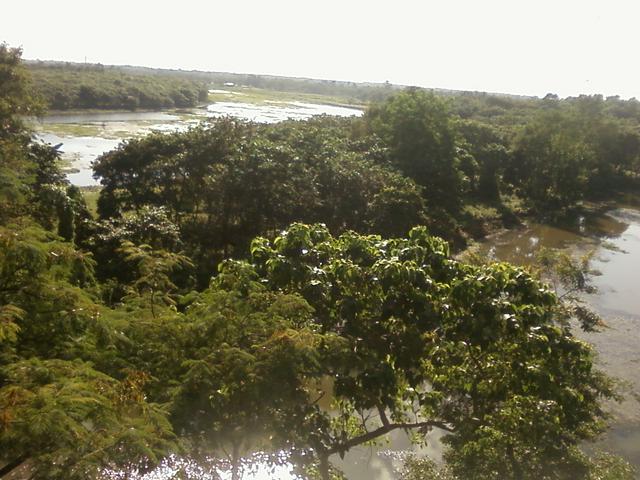Cooch Behar is a city and administrative district of the North Bengal region of West Bengal.
In the beginning, the capital of the kingdom of Cooch Behar was not static and became stable only when the same was shifted to the city of Cooch Behar in the early 17th century. The territory of Cooch Behar was known as ‘Kamta’ even during the period of Maharaja Viswa Singha and his son Maharaja Nara-Narayan. The Mughal forces grabbed certain portion of the ‘Kamta’ kingdom in the middle of the 17th century AD. Later on the accounts of Badshanama, Shah-Jaha-nama, Tarikh-I-Assam and the Alamgirnama ascribed this territory as Cooch Behar. It is, therefore, very much apparent that the ‘Koch’ kingdom was known as ‘Kamta’ even during the middle of the 17the century AD when the Koch kings like Maharaja Viswa Singh, Maharaja Nara Narayan and Maharaja Pran Narayan used the title ‘Kamteswar’ for themselves. The valor of the ‘Koch’ kings is known best by the prides of Maharaja Nara Narayan. He has issued his own coins. The kings ruled Cooch Behar till its union with Indian territory and its declaration as a district headquarter of the Province of West Bengal in 1950.

- Cooch Behar Palace. It also called the Victor Jubilee Palace. The design of the palace was based on that of Buckingham Palace in London in 1887, during the reign of Maharaja Nripendra Narayan. It is a brick-built double-storey structure in the classical Western style. The whole structure is 395 ft long and 296 ft wide. The articles and precious objects that these rooms and halls used to contain are now lost.
- Ranir Bagan. It was the Samadhi Sthal of the Cooch behar royal family. Now it is being converted into a park.
- Madan Mohan Temple. It was constructed by Maharaja Nripendra Narayan during 1885 to 1889. Ras Yatra and Rua Mela draws large crowds.
- Sagardighi. Sagardighi is a great ponds in the heart of Cooch Behar. It attracts migratory birds in winter and is surrounded by many important administrative buildings.
- Torsha River Bank.
- Naranarayan Park. The park is known for its serenity and exquisite lush green setting. It has rare bamboo plants, exotic flowers and orchids. Migratory birds come and settle in the lakes in winter. Kingfishers are there the year around.
- Madhupur Dham temple. It was built in the 16th century in honour of Shankaradeva.
- Shiva temple, Baneswar. Situated at a distance of about 10 km to the north of Cooch Behar town, the temple has a 'Shivalinga' 10 feet below the plinth level.
- Ardhanariswar temple, Baneswar.
- Rasik Beel. Situated about 42 km from Cooch Behar city, Rasik beel is a wet land complex. In Bengali beel means large water body. A recognised bird sanctuary it has such birds as lesser whistling teal, common teal, cotton teal, dapchick, bronze winged jacana, pheasant-tailed janacana, shoveler, barheaded goose, white-eyed poacherd etc. A 70 feet high watch tower has been constructed by Coochbehar Forest Division. There is a mini zoo at Rasik beel, with tortoise, gharial, leopard, spotted deer, peafowl and other inmates.
Cooch Behar Palace. It also called the Victor Jubilee Palace. The design of the palace was based on that of [[Westminster#Buckingham Palace|Buckingham Palace]] in [[City of London|London]] in 1887, during the reign of Maharaja Nripendra Narayan. It is a brick-built double-storey structure in the classical Western style. The whole structure is 395 ft long and 296 ft wide. The articles and precious objects that these rooms and halls used to contain are now lost.
Ranir Bagan. It was the Samadhi Sthal of the Cooch behar royal family. Now it is being converted into a park.
Madan Mohan Temple. It was constructed by Maharaja Nripendra Narayan during 1885 to 1889. Ras Yatra and Rua Mela draws large crowds.
Sagardighi. Sagardighi is a great ponds in the heart of Cooch Behar. It attracts migratory birds in winter and is surrounded by many important administrative buildings.
Torsha River Bank.
Naranarayan Park. The park is known for its serenity and exquisite lush green setting. It has rare bamboo plants, exotic flowers and orchids. Migratory birds come and settle in the lakes in winter. Kingfishers are there the year around.
Madhupur Dham temple. It was built in the 16th century in honour of Shankaradeva.
Shiva temple, Baneswar. Situated at a distance of about 10 km to the north of Cooch Behar town, the temple has a 'Shivalinga' 10 feet below the plinth level.
Ardhanariswar temple, Baneswar.
Rasik Beel. Situated about 42 km from Cooch Behar city, Rasik beel is a wet land complex. In Bengali beel means large water body. A recognised bird sanctuary it has such birds as lesser whistling teal, common teal, cotton teal, dapchick, bronze winged jacana, pheasant-tailed janacana, shoveler, barheaded goose, white-eyed poacherd etc. A 70 feet high watch tower has been constructed by Coochbehar Forest Division. There is a mini zoo at Rasik beel, with tortoise, gharial, leopard, spotted deer, peafowl and other inmates.
Roam all around, hang out with friends, get out for dinner, enjoy with family in the parks...and why not? It seems there is nothing much to do for visitors.
Pictures and cards of the palace can be found in the market place
Many restaurants are scattered throughout the city. The food is mainly a mixed Bengali cuisine though occasionally others like North Indian, South Indian, Chinese, etc. can be found. Prices are quite affordable though may have minor variations.
Drinking water can be obtained easily from govt. supply lines, however can also get packaged drinking water. Any other form of beverage are also available.
- Jaldapara
- Gorumara National Park
- Alipurduar
- Jalpaiguri
- Phuentsholing
- Assam
